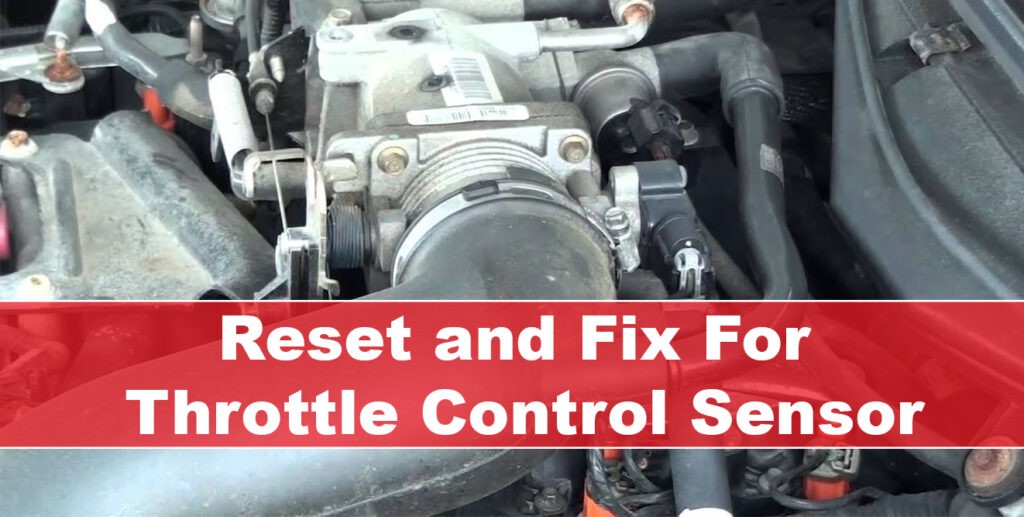Dodge Ram Electronic Throttle Control Problems
The electronic throttle control in Dodge Ram vehicles is a complex system that can experience a range of issues, from unresponsive accelerator pedals to engine stalling.
These issues are often caused by faulty sensors, wiring problems, or software malfunctions. To resolve the issue, it’s important to diagnose the root cause and seek professional help.
Electronic Throttle Control (ETC) is a system that electronically regulates the throttle body in an internal combustion engine. In simple terms, ETC determines the amount of air that enters the engine, which in turn affects the engine’s speed and power output.
Related Article: Speedform Throttle Controller Ram 1500
This system has replaced the traditional mechanical linkage between the accelerator pedal and the throttle body, providing drivers with more precise control over the vehicle’s performance.
How To Replace A Bad Electronic Throttle
Significance of Electronic Throttle Control in Dodge Ram Vehicles
Dodge Ram vehicles have become increasingly popular in recent years, thanks to their powerful engines, rugged design, and advanced technology.
As such, it’s crucial for owners of these vehicles to understand the importance of their electronic throttle control system, which is a critical component of the engine management system.
Any problems with ETC can cause significant issues with the vehicle’s performance, making it important to diagnose and repair any problems as soon as they arise.
Common Symptoms of Electronic Throttle Control Problems in Dodge Ram
Unresponsive Accelerator Pedal
One of the most common symptoms of electronic throttle control problems in Dodge Ram vehicles is an unresponsive accelerator pedal. This can occur when the ETC system fails to properly regulate the throttle body,
Making it difficult for the driver to control the speed of the vehicle. This can be dangerous, especially when driving at high speeds or navigating through traffic.
Engine Warning Light Activation
Another common symptom of electronic throttle control problems in Dodge Ram vehicles is the activation of the engine warning light. This warning light may indicate a range of issues, from simple sensor problems to more serious issues with the ETC system itself.
If this warning light illuminates, it’s important to have the vehicle inspected by a professional mechanic as soon as possible.
Engine Stalling
Another common symptom of electronic throttle control problems in Dodge Ram vehicles is engine stalling. This can occur when the ETC system fails to properly regulate the throttle body, causing the engine to shut down unexpectedly.
This can be dangerous, especially when driving at high speeds or navigating through traffic.
Rough Acceleration
Rough acceleration is another symptom of electronic throttle control problems in Dodge Ram vehicles. This can occur when the ETC system fails to regulate the throttle body properly, causing the engine to perform poorly and making it difficult for the driver to control the vehicle’s speed.
Slow Throttle Response
Finally, slow throttle response is another common symptom of electronic throttle control problems in Dodge Ram vehicles. This can occur when the ETC system fails to respond quickly to inputs from the accelerator pedal, making it difficult for the driver to control the vehicle’s speed.
See Also:
- Ram 1500 Throttle Body Spacer Worth It
- Ram 2500 Cruise Control Won T Turn on
- 2017 Ram 1500 Cruise Control Not Working
Causes of Electronic Throttle Control Problems in Dodge Ram
Faulty Sensors
Faulty sensors are one of the most common causes of electronic throttle control problems in Dodge Ram vehicles. These sensors are responsible for sending signals to the ETC system, providing important information about the vehicle’s performance. If these sensors fail, the ETC system may not work correctly, leading to problems with the vehicle’s performance.
Wiring Problems
Wiring problems are another common cause of electronic throttle control problems in Dodge Ram vehicles. These problems can occur when the wiring between the accelerator pedal, the throttle body, and the ETC system becomes damaged or broken, preventing the ETC system from working correctly.
Software Malfunctions
Finally, software malfunctions can also cause electronic throttle control problems in Dodge Ram vehicles. These malfunctions can occur when the software that controls the ETC system becomes corrupt or outdated, leading to problems with the vehicle’s performance.
Diagnosing Electronic Throttle Control Problems in Dodge Ram
Visual Inspection
The first step in diagnosing electronic throttle control problems in Dodge Ram vehicles is visually inspecting the vehicle’s components. This may include inspecting the wiring and sensors for any signs of damage or wear, as well as checking for any leaks or other issues that may be affecting the ETC system.
Scanning the Vehicle’s Computer
The next step in diagnosing electronic throttle control problems in Dodge Ram vehicles is to scan the vehicle’s computer for any codes or errors. This can be done using an OBD-II scan tool, which can provide valuable information about the vehicle’s performance and help identify any issues with the ETC system.
Testing the Sensors and Components
Once the initial visual inspection and computer scan are complete, the next step is to test the sensors and components that make up the electronic throttle control system. This may include testing the accelerator pedal, the throttle body, and the sensors to ensure that they are functioning correctly.
Repairs for Electronic Throttle Control Problems in Dodge Ram
Replacing Faulty Sensors
If the diagnosis reveals that one or more sensors are faulty, the first step in repairing electronic throttle control problems in Dodge Ram vehicles is to replace the faulty sensors. This can typically be done relatively easily and quickly, restoring proper function to the ETC system.
Repairing or Replacing Damaged Wiring
If the diagnosis reveals that there are problems with the wiring, the next step is to repair or replace the damaged wiring. This may involve repairing broken or frayed wires, or replacing the wiring entirely if it has become damaged beyond repair.
Updating the Software
Finally, if the diagnosis reveals that the software that controls the ETC system is outdated or corrupt, the next step is to update the software. This may involve downloading and installing a newer version of the software or having a professional mechanic perform the update for you.

Credit: autovfix.com
FAQs:
What is the electronic throttle control in Dodge Ram vehicles?
In Dodge Ram vehicles, ETC is responsible for controlling the amount of air entering the engine, which affects engine speed and power output.
What are the common symptoms of electronic throttle control problems?
What are the causes of electronic throttle control issues in Dodge Ram vehicles?
How can I fix electronic throttle control problems in my Dodge Ram?
Is it safe to drive a Dodge Ram with electronic throttle control problems?
Conclusion
Electronic throttle control problems in Dodge Ram vehicles can cause serious issues with the vehicle’s performance, making it important to diagnose and repair any problems as soon as they arise.
Whether you are experiencing unresponsive accelerator pedals, engine warning light activations, engine stalling, rough acceleration, or slow throttle response, it’s important to have your vehicle inspected by a professional mechanic.
With proper diagnosis and repairs, you can restore proper function to your electronic throttle control system and enjoy a smoother, more reliable driving experience.






